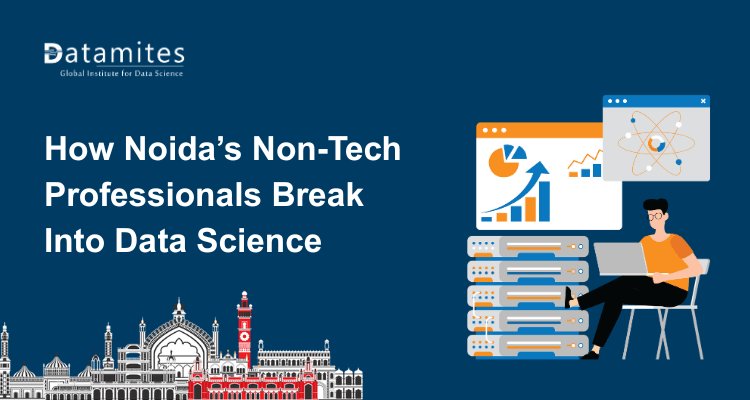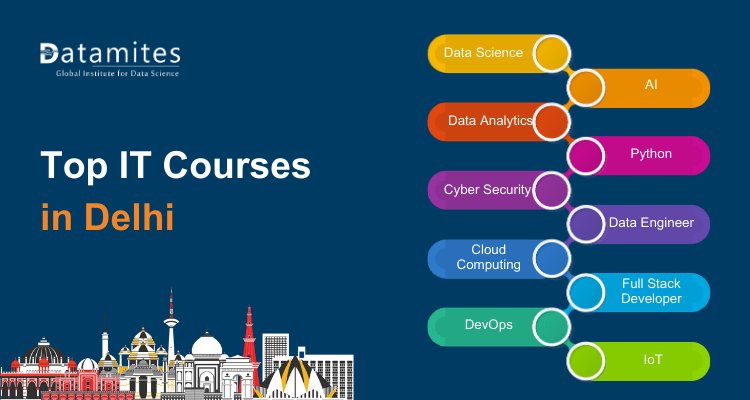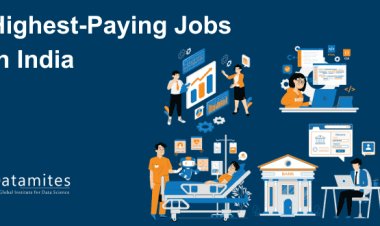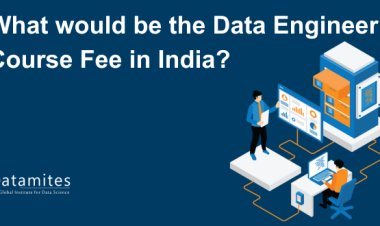Bias-Variance Tradeoff: Key Concept in Data Science Models
The bias-variance tradeoff explains how model complexity affects prediction accuracy in data science. It highlights the need to balance bias and variance to achieve optimal model performance and generalization.
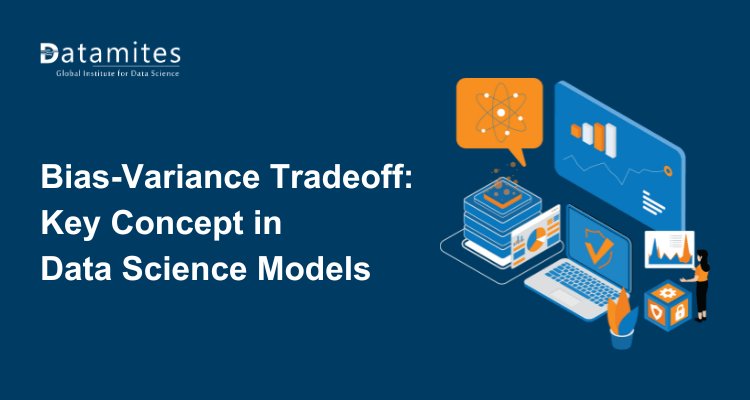
The bias-variance tradeoff is a fundamental concept in data science and machine learning that determines how well a model learns and performs on new data. It represents the balance between bias, the error from simplifying a model too much, and variance, the error from making a model too complex. A high-bias model leads to underfitting, missing important trends, while a high-variance model causes overfitting, capturing noise instead of real patterns. The ideal model minimizes both to achieve better accuracy and generalization.
To handle this tradeoff effectively, data scientists apply techniques such as cross-validation, regularization (L1/L2), ensemble learning, and collecting more training data. Finding the right balance between bias and variance ensures that the model is both accurate and reliable across different datasets. Mastering the bias-variance tradeoff is essential for building robust, high-performing data science models that deliver consistent real-world results.
Understanding the Bias-Variance Tradeoff in Data Science
Every predictive model faces the data science challenges of balancing bias and variance. Bias leads to underfitting, where the model is too simple to capture important trends, while variance leads to overfitting, where the model captures noise as if it were meaningful patterns. The goal is to minimize both, producing models that perform well on training data and generalize effectively to new, unseen data.
What is Bias in Data Science Models?
Bias occurs when a model makes strong assumptions about data, leading to systematic errors. High bias models, such as linear regression on non-linear data, often fail to capture underlying patterns. They tend to underfit, meaning the model is too simple to represent the complexity of the dataset.
A model with high bias typically has:
- Low complexity
- Poor training performance
- Low flexibility to adapt to new data
While simplicity helps interpretability, excessive bias prevents the model from learning important relationships within the data.
Understanding Variance in Machine Learning Models
Variance, on the other hand, measures how much a model’s predictions change when trained on different subsets of the same data. Models with high variance learn not only the true signal but also the noise in the data. This results in overfitting, where the model performs exceptionally on training data but fails to generalize to test data.
High variance models usually:
- Have complex architectures
- Fit noise rather than meaningful patterns
- Show large fluctuations across different datasets
Reducing variance involves techniques such as regularization, increasing training data, or using ensemble methods.
Striking the Right Balance: The Tradeoff
The bias-variance tradeoff describes the tension between underfitting and overfitting. The ideal model should not be too simple (high bias) or too complex (high variance). The total prediction error can be expressed as the sum of bias², variance, and irreducible error.
To achieve the right balance, data scientists employ methods like:
- Cross-validation to estimate generalization performance
- Regularization techniques such as Lasso or Ridge Regression
- Ensemble learning methods like Random Forest or Gradient Boosting
Each technique helps control complexity and ensure the model generalizes effectively.
Refer to these articles:
- Cross Entropy in Data Science
- Binomial Distribution: A Beginner’s Guide for Data Science
- Box Plot in Data Science: How to Visualize Data Spread
How Bias and Variance Impact Model Performance
Bias and variance directly influence a model’s accuracy and its ability to generalize. High bias leads to underfitting, where the model is too simple to capture patterns in the data, resulting in poor performance on both training and test datasets. High variance causes overfitting, where the model learns noise along with patterns, performing well on training data but poorly on new, unseen data.
Finding the right balance is crucial: reducing bias helps the model learn underlying trends, while controlling variance ensures it generalizes effectively. Data Science Techniques such as cross-validation, regularization, and ensemble methods can help achieve this balance, producing robust and reliable models.
High Bias + Low Variance (Underfitting)
- The model is too simple (e.g., linear regression on a highly nonlinear dataset).
- Fails to capture data complexity.
- Both training and test errors are high.
Low Bias + High Variance (Overfitting)
- The model is overly complex (e.g., deep neural networks with limited data).
- Captures noise as if it were a signal.
- Training error is low, but test error is high — poor generalization.
Optimal Balance (Low Bias + Low Variance)
- The model captures true patterns without fitting noise.
- Achieves the best generalization on unseen data.
Techniques to Balance Bias and Variance in Data Science
Striking the optimal balance between bias and variance is crucial for creating models that perform reliably on new data. Key approaches to achieve this, which are important for any data science professional, include:
Cross-Validation
By splitting data into training and validation sets, cross-validation allows the model’s performance to be evaluated on unseen data, helping to detect overfitting, which indicates high variance, or underfitting, which indicates high bias, early in the process.
Regularization
Methods like L1 (Lasso) and L2 (Ridge) add a penalty for large model weights, which helps control model complexity and reduces overfitting.
Ensemble Methods
Ensemble methods combine predictions from multiple models to improve generalization, with techniques like bagging reducing variance and boosting helping to reduce both bias and variance.
Simplifying or Complexifying the Model
Simpler models tend to reduce variance but may increase bias, while more complex models reduce bias but can increase variance, so it is important to choose a level of model complexity that suits the size and patterns of the data.
Increase Training Data
More data can help the model learn true patterns, reducing variance without increasing bias.
Feature Selection and Engineering
Removing irrelevant features helps reduce variance, while creating meaningful features can lower bias by better representing the underlying structure of the data.
Early Stopping (for iterative algorithms like neural networks)
Early stopping halts training before the model overfits, helping to control variance while retaining the patterns the model has already learned.
Refer to these articles:
- Top Databases Every Data Scientist Should Know in 2025
- The Role of Data Science in Protecting Cultural Heritage
- A Beginner’s Guide to Linear Programming for Data Science
Real-World Examples of the Bias-Variance Tradeoff in Data Science
In data science, the bias-variance tradeoff is a key concept that affects how well predictive models perform on new data. It represents the balance between bias, where a model is too simple and misses important patterns, and variance, where a model is overly complex and overfits the training data. Understanding this tradeoff is essential for building models that are both accurate and generalizable, a skill that is highly valuable in a data science career. Here are some real-world examples from the field of data science.
1. Predicting House Prices
Data scientists often build models to estimate property values. A high-bias model might use only square footage, ignoring important factors like location or amenities, leading to underfitting. A high-variance model that incorporates every minor detail, including noisy or irrelevant features, may perform perfectly on historical data but fail to predict prices for new houses. A balanced approach uses key features with techniques like regularization to generalize better.
2. Stock Market Analysis
Predicting stock prices is a common data science task. A simple moving average model ignores market volatility and important indicators, producing biased predictions. Conversely, an extremely complex model that tries to account for every micro-trend may overfit historical fluctuations, exhibiting high variance. Data scientists achieve balance by selecting relevant features, applying ensemble methods, and validating models on unseen data.
3. Image Classification
In data science projects involving computer vision, such as identifying objects in images, a shallow model may fail to detect subtle differences, showing high bias. A very deep neural network trained on limited data may memorize images, resulting in high variance. Convolutional neural networks (CNNs), combined with techniques like data augmentation and dropout, provide a balanced solution, learning meaningful patterns while generalizing well to new images.
4. Credit Risk Modeling
Banks rely on data science models to assess credit risk. Using only basic features like age and income results in high bias, while a model that considers every historical variable can overfit and misclassify new applicants, showing high variance. Effective data science solutions use feature selection, regularization, and ensemble models to strike the right balance, ensuring predictions are accurate and reliable.
Understanding the bias-variance tradeoff is crucial for building data science models that are both accurate and generalizable. Striking the right balance ensures reliable predictions and meaningful insights across real-world applications.
Why the Bias-Variance Tradeoff Matters in Data Science Projects
The bias-variance tradeoff is a fundamental concept in data science because it directly affects how well a model performs on both training and unseen data. In essence, it represents the tension between underfitting and overfitting. High bias occurs when a model is too simple to capture the underlying patterns in the data, leading to underfitting and poor predictive performance. On the other hand, high variance happens when a model is too complex, fitting even the noise in the training data, which leads to overfitting and poor generalization on new data.
Understanding this tradeoff is critical in data science projects because it guides how you design, train, and evaluate models. If you ignore it, you risk building models that either fail to capture meaningful patterns or perform well on training data but fail in real-world scenarios. By balancing bias and variance, you can create models that generalize effectively, providing reliable predictions and actionable insights. Techniques such as cross-validation, regularization, ensemble methods, and careful feature engineering are all employed to manage this tradeoff, making it a cornerstone of robust and scalable data science solutions.
Refer to these articles:
Many companies and data science teams are increasingly focused on building predictive models that are both accurate and generalizable, making the bias-variance tradeoff a critical consideration in machine learning. According to Mordor Intelligence, the data science platform market is valued at USD 111.23 billion in 2025 and is expected to reach USD 275.67 billion by 2030, fueled by AI adoption and cloud-based analytics, with North America leading and Asia-Pacific experiencing the fastest growth. This rapid expansion underscores the growing demand for professionals skilled in model optimization and data-driven decision-making.
The bias-variance tradeoff helps data scientists balance model errors, ensuring predictions are accurate without overfitting. By understanding this tradeoff, teams can build models that generalize well, deliver reliable insights, and support smarter data-driven decisions. Properly managing bias and variance also improves model performance across diverse datasets, making analytics solutions more robust and impactful.
Now is the perfect time to strengthen your data science skills and master concepts like the bias-variance tradeoff. By enrolling in a data science course in Mumbai, Hyderabad, Pune, Ahmedabad, Chennai, Coimbatore, or Bangalore, you gain hands-on experience, practical projects, and expert guidance to build models that perform reliably on real-world data. With industries worldwide seeking professionals who can create accurate and generalizable models, the right training can unlock diverse and rewarding career opportunities.
DataMites Institute stands out as a leading training provider, offering an industry-aligned curriculum with a strong emphasis on hands-on learning. Through live projects and internship opportunities, DataMites ensures learners not only understand theoretical concepts like the bias-variance tradeoff but also apply them effectively in real-world machine learning scenarios.
The Certified Data Scientist courses at DataMites, accredited by IABAC and NASSCOM FutureSkills, are designed to build expertise in advanced analytics, model evaluation, and essential data science tools. For offline learners, DataMites offers data science training in Coimbatore, Hyderabad, Chennai, Mumbai, Bangalore, Ahmedabad, and Pune, while online programs deliver the same high-quality education to students worldwide, helping them master critical concepts for robust and generalizable models.

